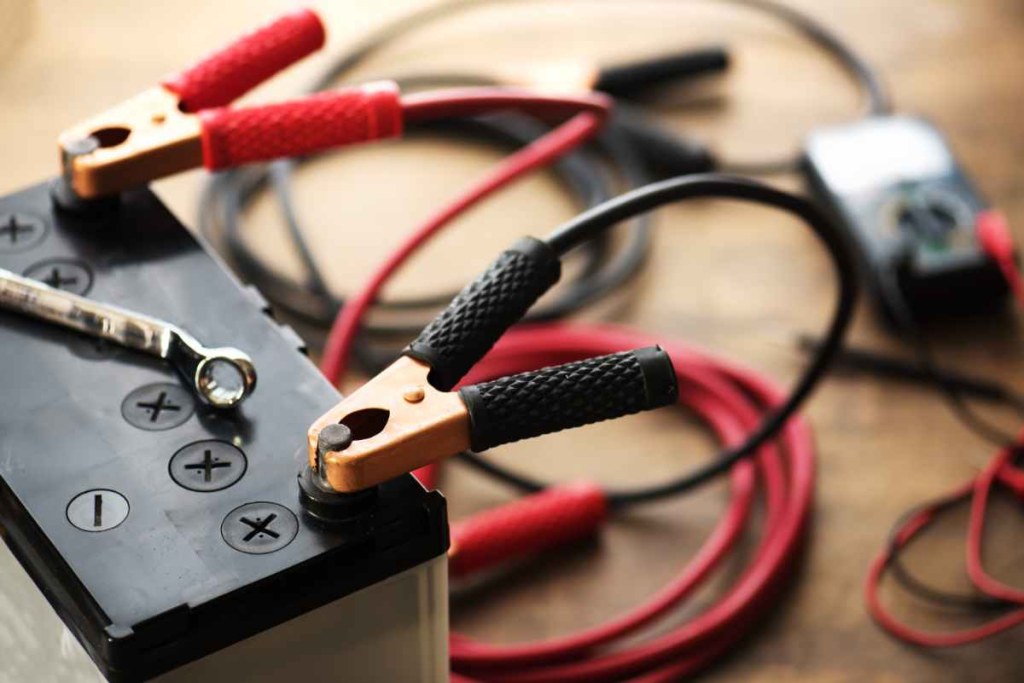Maximizing Car Battery Life: Keep Your Battery Charged When Not In Use With Our Proven Tips!
Keeping Car Battery Charged When Not in Use
Welcome, Car Enthusiast! As a car lover, you understand the importance of maintaining your vehicle’s battery so that it’s always ready to go when you need it. But what about those times when your car is not in use? How can you ensure that your car battery remains charged and in good condition during periods of inactivity? In this article, we will explore various strategies and tips for keeping your car battery charged when it’s not being used, ensuring that you won’t face any unpleasant surprises when you’re ready to hit the road again.
What is Keeping Car Battery Charged When Not in Use?
1 Picture Gallery: Maximizing Car Battery Life: Keep Your Battery Charged When Not In Use With Our Proven Tips!

Keeping a car battery charged when it’s not in use refers to the process of maintaining the battery’s charge level during periods of inactivity. This is particularly important for individuals who have multiple vehicles or for those who travel frequently and leave their cars parked for extended periods. By implementing proper battery maintenance techniques, you can avoid the frustration and inconvenience of a dead battery when you need your car the most.
Who Should Be Concerned About Keeping Car Battery Charged When Not in Use?

Image Source: mach1services.com
If you own a car, regardless of whether it’s a brand-new model or an old classic, you should be concerned about keeping the battery charged when the vehicle is not in use. This is especially crucial if you know that your car will be sitting idle for an extended period, such as during a vacation or business trip. By taking proactive steps to maintain your car battery’s charge, you can prevent potential issues and ensure that your vehicle is always ready to go when you need it.
When Should You Start Keeping Car Battery Charged When Not in Use?
It’s important to start implementing battery charging techniques as soon as you know that your car will be sitting idle for an extended period. It could be a few days, a week, or even longer. By starting early, you give yourself ample time to properly maintain the battery’s charge and avoid any unpleasant surprises when it’s time to use your car again. Remember, it’s always better to be safe than sorry!
Where Should You Keep Your Car Battery Charged When Not in Use?
When it comes to keeping your car battery charged during periods of inactivity, the location plays a crucial role. Ideally, you should park your car in a covered and well-ventilated area, such as a garage. This helps protect the battery from extreme temperatures and reduces the risk of moisture and corrosion. If you don’t have access to a garage, consider using a car cover to shield your vehicle from the elements. Additionally, ensure that the area is secure and protected to prevent theft or vandalism.
Why is Keeping Car Battery Charged When Not in Use Important?
Keeping your car battery charged when it’s not in use is essential for several reasons. First, it ensures that your vehicle is always ready to start and eliminates the frustration of a dead battery. Second, regular battery maintenance prolongs its lifespan, saving you money in the long run. Lastly, a well-maintained battery contributes to overall vehicle reliability and performance. By taking care of your car battery, you’re taking care of your investment.
How Can You Keep Your Car Battery Charged When Not in Use?
Now that we understand the importance of keeping your car battery charged when it’s not in use, let’s explore some practical strategies to achieve this goal. First and foremost, invest in a quality battery charger or maintainer. These devices help ensure that your battery remains charged without overcharging, which can damage the battery. Additionally, consider disconnecting the negative terminal of your battery to prevent any power drain from accessory circuits. Regularly starting your car and letting it run for a few minutes can also help maintain the battery’s charge. Finally, if you’re planning to leave your car unused for an extended period, consider removing the battery and storing it in a cool and dry location.
Advantages and Disadvantages of Keeping Car Battery Charged When Not in Use
Like any other maintenance practice, keeping your car battery charged when it’s not in use has its advantages and disadvantages. Let’s take a closer look:
Advantages:
1. Ensures that your car is always ready to start when you need it.
👍2. Prolongs the lifespan of your car battery, reducing replacement costs.
👍3. Contributes to overall vehicle reliability and performance.
👍4. Provides peace of mind, knowing that your car is in good condition.
👍5. Prevents the inconvenience and frustration of a dead battery.
Disadvantages:
1. May require additional investment in a quality battery charger or maintainer.
👎2. Requires regular monitoring and maintenance to ensure optimal results.
👎3. Involves the risk of overcharging or undercharging the battery.
👎4. May require disconnecting the battery, which can result in loss of settings and memory in the vehicle’s electronic systems.
👎5. Removing and storing the battery can be cumbersome and time-consuming.
Frequently Asked Questions (FAQ)
1. Can I use a regular charger to keep my car battery charged?
No, it’s recommended to use a battery charger or maintainer specifically designed for automotive batteries. Regular chargers can overcharge the battery and damage it.
2. How often should I start my car to maintain the battery’s charge?
It’s advisable to start your car and let it run for a few minutes at least once a week to maintain the battery’s charge. However, consult your vehicle’s manual for specific recommendations.
3. Is it necessary to remove the battery when storing my car for an extended period?
Removing the battery is not necessary but can be beneficial, especially if you don’t have access to a quality battery charger or maintainer. Storing the battery properly helps prevent self-discharge and extends its lifespan.
4. Can I charge my car battery using solar panels?
Yes, solar panels can be an eco-friendly and convenient way to charge your car battery when it’s not in use. However, ensure that the solar panel system is compatible with automotive batteries.
5. How long can a car battery stay charged when not in use?
The duration that a car battery can stay charged when not in use depends on various factors, such as its age, condition, and the presence of any power-draining accessories. On average, a fully charged battery can maintain its charge for about two to three months.
Conclusion
Keeping your car battery charged when it’s not in use is crucial for maintaining its performance and ensuring that your vehicle is always ready to go. By following the tips and strategies outlined in this article, you can avoid the inconvenience and frustration of a dead battery. Remember to invest in a quality battery charger or maintainer, park your car in a suitable location, and consider removing the battery if necessary. Regular maintenance and proactive measures will help extend your car battery’s lifespan and keep you on the road for many trouble-free miles.
Final Remarks
Disclaimer: The information provided in this article is for educational and informational purposes only. It is not intended as professional advice and should not be construed as such. Always consult your vehicle’s manual and seek the guidance of a qualified professional for specific recommendations and instructions regarding your car battery maintenance.
This post topic: Used Car

